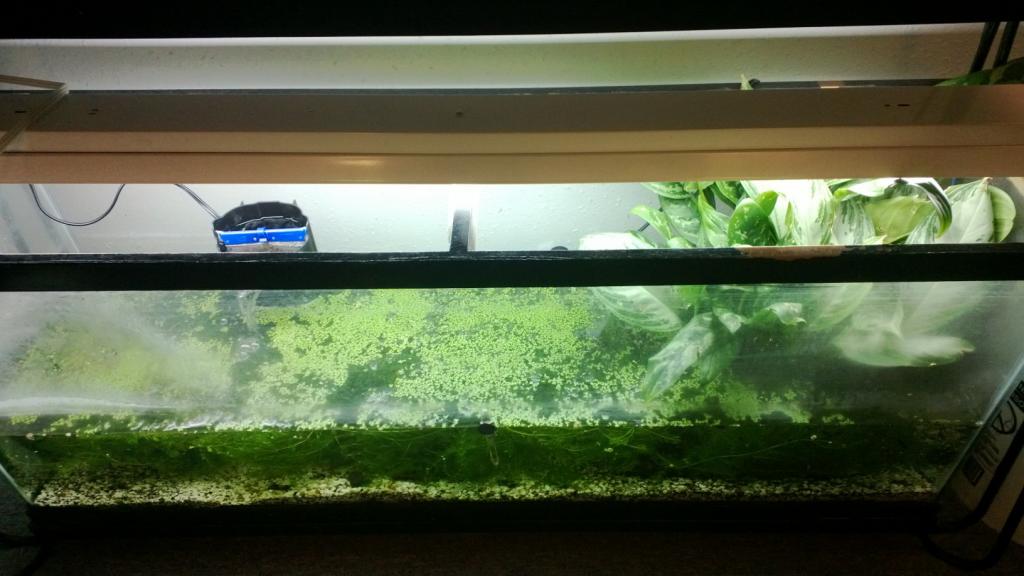BBradbury
Aquarium Advice Addict
- Joined
- May 24, 2011
- Messages
- 5,011
Low Maintenance Tank
Mollies...
Haven't tested my tank water here in Colorado for years. Last time as I recall, the pH was 7.6. Never tested hardness or any of that. It's important to have the tank well planted with the Chinese Evergreen plants. All the potting mixture must be rinsed from the roots. All of it. If you leave the potting mixture attached to the roots, no oxygen will get to them and the plant will die. The more plants, the better the water chemistry.
I went to the local kitchen supply store and found a couple of small, cheap plastic baskets with holes on the sides to hold the plants in place. On the bottom of the basket, I put an air stone and attached a length of plastic tubing to it and the other end to an air pump. I arranged some medium sized rocks around the stocks of the plant to hold it in place in the basket. Take care not to damage the roots. The bubbles from the air stone will maintain a steady source of O2 to the roots and the water movement helps the roots take in the nutrients from the water. The plant grows very well. The large "Ag" plant I have has been in the water for roughly 3 weeks. I have a couple of dozen guppy fry in there and added a bit of liquid fertilizer. The plant is doing very well and has two blooms. The blooms are similar to those on the Anubius aquatic plant.
Keep the questions coming if you have them.
B
Thanks for the post. Yes, I'm in Albuquerque, NM and have hard water. It's been a while since I tested so I don't remember the numbers but I will need to keep this in mind when I start mine. B- thoughts?
Mollies...
Haven't tested my tank water here in Colorado for years. Last time as I recall, the pH was 7.6. Never tested hardness or any of that. It's important to have the tank well planted with the Chinese Evergreen plants. All the potting mixture must be rinsed from the roots. All of it. If you leave the potting mixture attached to the roots, no oxygen will get to them and the plant will die. The more plants, the better the water chemistry.
I went to the local kitchen supply store and found a couple of small, cheap plastic baskets with holes on the sides to hold the plants in place. On the bottom of the basket, I put an air stone and attached a length of plastic tubing to it and the other end to an air pump. I arranged some medium sized rocks around the stocks of the plant to hold it in place in the basket. Take care not to damage the roots. The bubbles from the air stone will maintain a steady source of O2 to the roots and the water movement helps the roots take in the nutrients from the water. The plant grows very well. The large "Ag" plant I have has been in the water for roughly 3 weeks. I have a couple of dozen guppy fry in there and added a bit of liquid fertilizer. The plant is doing very well and has two blooms. The blooms are similar to those on the Anubius aquatic plant.
Keep the questions coming if you have them.
B


